"Admiral Count Spee." Pirate weekday and the end of the battleship-cut
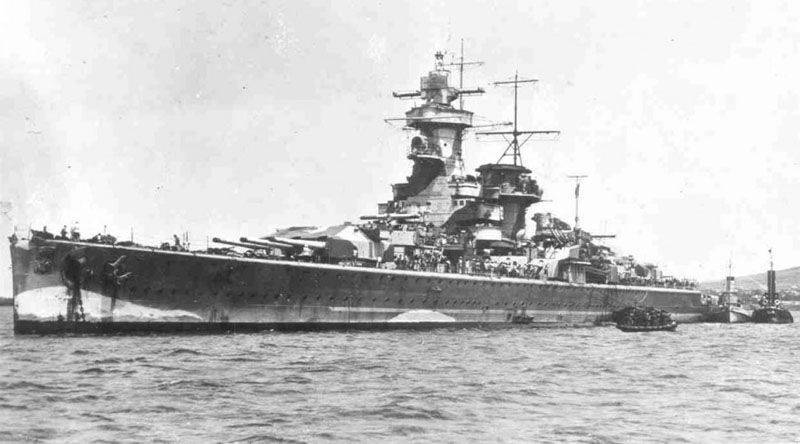
In the evening of December 17, a crowd of thousands of spectators from the shores of the Gulf of La Plata watched an exciting spectacle. The war, which was already in full swing in Europe, finally reached the carefree South America and was no longer in the form of newspaper reports. Angular, with sharp chopped forms, like the medieval Teutonic knight, the German raider "Admiral Count Spee" was moving along the fairway. Those who were well-versed in the naval stories, thoughtfully shook their heads - the circumstances were too reminiscent of the events of 120-year-old, when the inhabitants of Cherbourg escorted the cruiser of the Confederates "Alabama" to battle with "Kearsarge". The crowd was eager for battle and inevitable bloodshed: everyone knew that the English squadron was guarding the entrance to the Bay of Spee. "Pocket Battleship" (the English term, the Germans called such ships battleship-edged) slowly went beyond the boundaries of the territorial waters, the anchors rattled in the cliffs. And then the explosions thundered - a cloud of smoke and flame rose above the ship. The crowd sighed spellbound and disappointed. The expected battle did not take place. Betting and bargaining collapsed, newspaper reporters were left without fees, and Montevideo doctors were out of work. The career of the German "pocket battleship" "Admiral Count Spee" was over.
Sharp Dagger in Narrow Sheath
In an effort to humiliate and trample Germany after the First World War, the Entente allies entangled the defeated country with many restrictions, primarily militarily. It was not easy enough to determine in a long list with no less impressive additions, refinements and explanations: what can be defeated in armament and what should it look like? With the death of the most efficient core Fleet The British lords finally breathed easier on the high seas through self-flooding in Scapa Flow, and the fog over London became less gloomy. The Weimar Republic was allowed to have only 6 battleships as part of a small "club for the elderly", which can be called a fleet with a stretch of the nose, not counting the limited number of ships of the remaining classes, which were actually armadillos of the pre-pre-dreadnought era. The pragmatism of Western politicians was obvious: these forces were enough to confront the Navy of Soviet Russia, the state of which was even more dull by the beginning of the 20s and at the same time completely insufficient for any attempts to sort things out with the winners. But the larger the text of the agreement, the more points it contains, the easier it is to find the corresponding loopholes and a field for maneuver in it. Under the Versailles Peace Treaty, Germany had the right to build new battleships with a tonnage limit of 10 thousand tons instead of the old ones after 20 years of service. It just so happened that the time spent in service of the battleships of the Braunschweig and Deutschland type, which entered service in 1902–1906, was approaching the treasured twenty-year mark by the mid-1920s. And just a few years after the end of World War I, the Germans began designing the ships of their new fleet. The fate in the person of the Americans presented the vanquished with an unexpected but pleasant gift: in 1922 the Washington Naval Agreement was signed, imposing restrictions on the quantitative and qualitative characteristics of ships of the main classes. Germany had a chance to create a new ship from scratch, being within the framework of less stringent agreements than those of the Entente countries that defeated it.
At first, the requirements for new ships were fairly moderate. This confrontation in the Baltic either with the fleets of the Scandinavian countries, who had the junk themselves in abundance, or a reflection of the “punitive” expedition of the French fleet, where the Germans considered the main ships of the battleships of the intermediate class of the “Danton” type - the French would hardly send their deepest seated dreadnoughts. The future German battleship at first confidently resembled a typical coastal defense ship with powerful artillery and a low board. Another group of specialists advocated the creation of a powerful 10000-ton cruiser capable of fighting any of the “Washingtonians,” that is, cruisers built to meet the restrictions imposed by the Washington Maritime Agreement. But then again, the cruiser was of little use in the Baltic, moreover, the admirals scratched their heads, complaining about the insufficient booking. A project deadlock was formed: a well-armed, protected and high-speed ship was required. A breakthrough in the situation came when the fleet was headed by Admiral Zenker, the former commander of the battle cruiser Von der Tann. It was under his leadership that the German designers managed to cross the “hedgehog with a snake”, which resulted in the I / M 26 project. The convenience of fire control and space saving has led to an optimal 280-mm main caliber. In 1926, the tired of victory, the French left the demilitarized and occupied by them Rhineland, and the Krupp concern could guarantee the timely production of new barrels. Initially, the ship was planned to be equipped with intermediate caliber - universal 127-mm guns, which was an innovative and progressive decision for those years. However, everything that looks good on paper is not always embodied in metal (sometimes, fortunately) or is not realized at all. The conservative admirals, who are always preparing for the naval battles of a bygone war, demanded a return to the 150-mm medium caliber, which would complement the 88-mm anti-aircraft guns. Further service "pocket battleships" showed the fallacy of this idea. The center of the battleship turned out to be overloaded with weapons, protected, moreover, for the sake of saving only with splinter shields. But this seemed a little to the admirals, and they pushed through the installation of more torpedo tubes, which had to be placed on the upper deck behind the main tower. I had to pay for this with protection - the main armor belt “lost” from 100 to 80 mm. Displacement increased to 13 th. Tons.
The first ship of the series, serial number 219, was laid in Kiel at the Deutsche Fanka 9 February 1929. The construction of the main battleship (in order not to embarrass the “enlightened navigators” and their friends, the new ships were classified) was not very fast, and under the pretentious name “Deutschland” it was handed over to the 1 fleet of April 1933. 25 June 1931 at the state shipyard in Wilhelmshaven was laid the second unit - "Admiral Scheer". Its construction was going on at a rather fast pace. Meanwhile, the appearance of some suspicious “battleships” in Germany, having contractual dimensions on paper, but in reality looking very impressive, could not but bother their neighbors. First of all, the French, who quickly began to design the "hunters" for the German "Deutschlands". The fears of the French were embodied in the ship steel of the Dunkerque and Strasbourg battle cruisers, superior to their opponents in all respects, although they were significantly more expensive. Germanic designers had to respond to the appearance of “dunkirk” with something, which caused some pause in the construction of the series. It was already too late to make drastic changes to the project, so we limited ourselves to revising the third ship's booking system, bringing it to 100 mm, and instead of 88-mm anti-aircraft guns, put more powerful 105-mm.
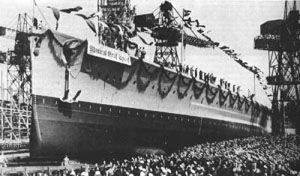
1 September 1932 of the year on the slipway after the descent of the "Sheer" lay "battleship C" with the building number 124. 30 June 1934, the daughter of German admiral Count Maximilian von Spee, Countess Hubert, smashed a traditional bottle of champagne on board a ship named for her father. 6 January 1936 of the Year "Admiral Count Spee" joined the kriegsmarine. In memory of the admiral who died in the Falkland Islands in 1914, the new battleship carried the coat of arms of von Spee's house on its nose, and on the tower-like superstructure was made the Gothic inscription “CORONEL” in honor of the victory gained by the admiral over the English squadron off the coast of Chile. From the first two battleships of the “Spee” series, it was distinguished by enhanced booking and a developed superstructure. A few words should be said about the power plant of the Deutschland type. Naturally, these so-called “battleships” were not intended for any protection of the Baltic waters - their main task was the violation of enemy communications and the fight against merchant shipping. Hence the increased requirements for autonomy and cruising range. As the main power plant was supposed to install diesel engines, in the production of which Germany has traditionally kept the lead. Back in 1926, the well-known firm “MAN” began the development of a lightweight marine diesel engine. For the experiment, a similar product was used as an installation for an economic course on the Leipzig light cruiser. The new engine turned out to be capricious and often failed: since the design turned out to be lightweight, it created an increased vibration, which led to breakdowns. The situation was so serious that the “Spee” began to work out options for installing steam boilers. But the engineers of MAN promised to bring their brainchild to mind, besides the project requirements did not foresee the difference in the types of engines installed, and the third ship of the series received the 8 main nine-cylinder diesel engines with a total capacity of 56 thousand hp provided for it. By the beginning of World War II, the engines on all three ships were brought to a high degree of reliability, which proved in practice the first raid of the Admiral Scheer, which took 161 day 46 thousands of miles without serious damage.
Pre-war service
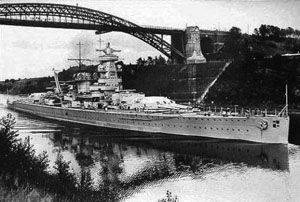
After various tests and equipment checks, the “pocket battleship” took part in the naval parade held on May 29 on May 1936, which was attended by Hitler and other high-ranking officials of the Reich. Before the resurgent German fleet, there was a problem of training personnel of the seafarers, and already 6 of June "Graf Spee", taking on board the midshipmen, sailing to the Atlantic to the island of Santa Cruz. During the 20-day hike is checked the work mechanisms, especially diesel engines. It was noted their increased noise, especially on the main course. Upon returning to Germany - again exercises, trainings, training voyages in the Baltic. With the beginning of the Spanish Civil War, Germany took an active part in these events. As a member of the “Committee on Non-intervention”, whose function was to prevent the supply of military cargo to both opposing sides, the Germans sent almost all of their large ships to Spanish waters. In the Spanish waters, they first visited Deutschland and Scheer, then it was the turn of the Count Spee, who set sail for the Bay of Biscay 2 in March 1937. The “pocket battleship” for two months kept its watch, visiting the Spanish ports in between times and encouraging the Francoists with their presence. In general, the activities of the “Committee” over time began to be increasingly humiliating and one-sided, turning into a farce.
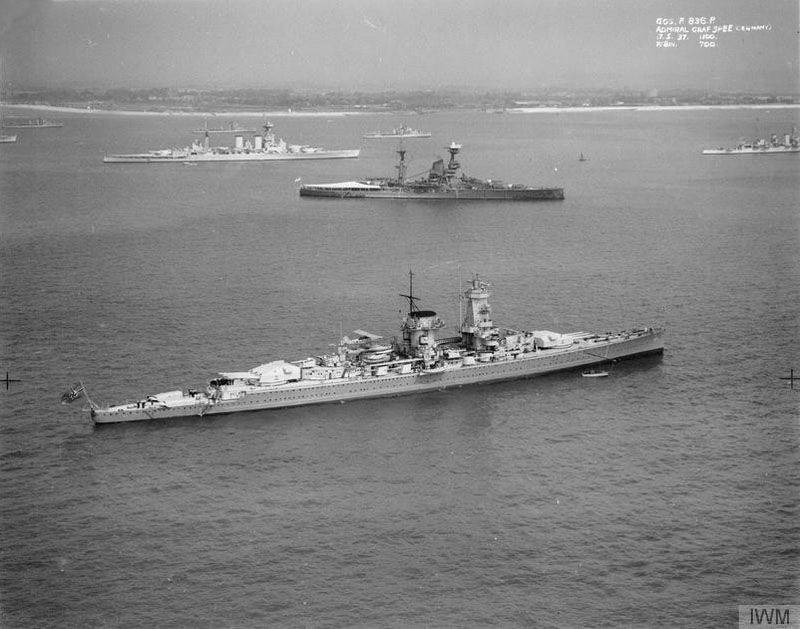
In May, the “Spee” returned to Kiel, after which it was sent as the most modern German ship at that time to represent Germany in the naval parade on the Spithead raid, given in honor of the British King George VI. Then again a trip to Spain, this time short. The “pocket battleship” time left before the big war was spent in frequent exercises, training voyages. Repeatedly the fleet commander raised the flag on it - the Spee had a weighty reputation as an exemplary parade ship. In 1939, a large foreign campaign of the German fleet was planned to demonstrate the flag and technical achievements of the Third Reich, in which all three “pocket battleships”, light cruisers and destroyers were to take part. However, other events occurred in Europe, and the Kriegsmarine was no longer up to demonstration campaigns. The Second World War began.
The beginning of the war. Pirate weekdays
In the face of the increasingly deteriorating situation of the summer of 1939 and the inevitable clash with Poland and its allies, England and France, the German command planned to launch a traditional raider war. But the fleet, whose admirals were worn with the concept of chaos on communications, was not ready to create it - only Deutschland and Admiral Count Spee, who were constantly in dense operation, were ready for a long march to the ocean. It also turned out that the hordes of raiders converted from commercial ships are only on paper. To save time, it was decided to send two “pocket battleships” and supply vessels to the Atlantic to provide them with everything they need. 5 August 1939, the ship Altmark left Germany and went to the United States, where it was supposed to take on diesel for Spee. The “pocket battleship” itself left Wilhelmshaven 21 of August under the command of captain Zee G. Langsdorf. 24, followed by its sistership, was followed by Deutschland, working in conjunction with the tanker Westerfald. The zones of responsibility were divided as follows: “Deutschland” was supposed to operate in the North Atlantic, in the area south of Greenland - at “Count Spee” hunting grounds were located in the southern part of the ocean.
Europe still lived a peaceful life, but Langsdorf was already ordered to observe the maximum secrecy of movement, so as not to alarm the British ahead of time. “Spee” managed to sneak unnoticed, first to the shores of Norway, and then go to the Atlantic south of Iceland. This route, subsequently carefully guarded by British patrols, will not be repeated by any German raider. Bad weather helped the German ship continue to go unnoticed. 1 September 1939 caught the pocket battleship in 1000 miles north of the Cape Verde Islands. There was appointed and held a meeting with the "Altmark". Langsdorf was unpleasantly surprised by the fact that the supply team found and recognized the German raider on a high tower-like superstructure, which has no analogues in other ships. Moreover, the Altmark itself was spotted from the Spee later. Having received the fuel and completing the command of the supplier of artillery servants, Langsdorf continued sailing south, observing a complete radio silence. “Spee” kept complete secrecy, dodging any smoke, - Hitler still hoped to resolve the issue with Poland in the style of “Munich 2.0” and therefore did not want to make the British angry earlier. While on the "pocket battleship" they waited for instructions from Berlin, his team, taking into account the opinion of colleagues from the "Altmark", took up the disguise of the ship. Of plywood and canvas behind the front tower of the main caliber, a second one was installed, which gave the Spee a distant resemblance to the Scharnhorst battle cruiser. It was possible to expect that a similar trick would work with the captains of civil courts. Finally, September 25 Langsdorf received freedom of action - an order came from the headquarters. The hunter could now shoot a game, and not just watch her from the bushes. The supplyist was released, and the raider began to patrol the northeast coast of Brazil near the port of Recife. September 28 was lucky for the first time - after a brief harassment, the British 5 thousandth steamer “Klement” stopped the coastal flight from Pernambuco to Bahia. When trying to send their first booty to the bottom, the Germans had to sweat a lot: in spite of the explosive cartridges laid and the Kingston open, the ship did not sink. Two torpedoes launched along it passed by. Then the 150-mm guns went into action and, spending precious shells, the obstinate Englishman was finally sent to the bottom. The war had just begun, and both sides had not yet accumulated merciless bitterness. Langsdorf contacted the coastal radio station and indicated the coordinates of the boats in which the members of the Clement crew were located. However, this not only revealed the location of the raider, but also helped the enemy to identify him. The fact that a powerful German warship was operating in the Atlantic rather than an armed “torgash” in any way alarmed the British command, and it promptly responded to the threat. To search and destroy the German “pocket battleship”, 8 tactical combat groups were created, which included the 3 battlecruisers (the British Rinaun and the French Dunkirk and Strasbourg), the 3 aircraft carrier, the 9 heavy and 5 light cruisers, not counting ships engaged in escorting Atlantic convoys. However, in the waters where Langsdorf was going to work, that is, in the South Atlantic, he was confronted by all three groups. Two of them did not represent an excessive threat and consisted of a total of 4 heavy cruisers.
His second trophy, the British steamer "Newton Beach", "Spee" captured on the line Cape Town - Freetown 5 October. Together with the cargo of maize, the Germans received an intact English ship radio station with the appropriate documentation. On October 7, the steamer "Ashley" carrying raw sugar was the victim of a raider. Allied ships were actively searching for the robber who dared to get into the Atlantic, in this “old English court”. October 9 aircraft from the aircraft carrier "Ark Royal" discovered a large tanker, which lies in the drift west of the Cape Verde Islands, which was called the American Delmar transport. Since no one accompanied the aircraft carrier apart from Rinaun, Admiral Wells decided not to conduct a search and follow the previous course. So the supplier of Altmark escaped the fate of being destroyed at the very beginning of his voyage. Out of harm's way, the transport moved to southern latitudes. October 10 "pocket battleship" stopped a large transport "Huntsmen" carrying various food loads. Having sunk it, “Spee” 14 of October met with the nearly exposed “Altmark”, to which he transferred prisoners and products from captured English ships. Replenishing fuel reserves, Langsdorf continued the operation - October 22 raider stopped and sank the 8-thousandth ore carrier, which, however, had time to betray the distress signal, which was taken on the shore. Fearing to be discovered, Langsdorf decided to change the area of activity and try his luck in the Indian Ocean. For the first time since the beginning of the hike, contacting the headquarters in Berlin and saying that he plans to continue the hike until January 1940 of the year, 4 of November “Spee” goes around the Cape of Good Hope. He moved towards Madagascar, where large ocean shipping routes intersected. The 9 of November when landing in the conditions of excitement at sea was damaged by the ship's reconnaissance aircraft Ar-196, which left the pocket battleship for a long time without eyes. The reliance on the rich booty that the Germans were counting on was not justified - only on November 14 the small ship Africa Shell was stopped and flooded.
November 20 "Admiral Count Spee" returned to the Atlantic. November 28 - pleasant for the crew, exhausted by a futile campaign, a new rendezvous with the “Altmark”, from which they received fuel and updated their stock of provisions. Langsdorf decided to return to the successful for his ship of water between Freetown and Rio de Janeiro. The stocking ship could now continue cruising until the end of February 1940. His engines were moved, and the aircraft mechanics were finally able to bring the reconnaissance aircraft back to life. It went merrily with the flying Arado - 2 December sank the Dorik Star turbo-ship with a load of wool and frozen meat, and 3 December 8 the thousandth Tyroa, which also transported lamb in refrigerators. Langsdorf again decides to change the area of cruising, choosing for this the mouth of the river La Plata. Buenos Aires is one of the largest ports in South America, and several British ships almost every day came here. December 6 "Admiral Count Spee" for the last time meets with its supplier Altmark. Taking the opportunity, the “pocket battleship” conducts artillery exercises, choosing its own tanker as a target. Their result was extremely disturbed by the senior gunner of the frigate ship capitain Asher - the personnel of the fire control system for two months of inactivity showed a very mediocre level of technical skills. 7 December, taking away more 400 prisoners, "Altmark" forever parted with his ward. By the evening of the same 7 December, the Germans managed to seize their last trophy - the ship "Streonschel", loaded with wheat. The newspapers found on board included a photograph of the British heavy cruiser Cumberland in camouflage. It was decided to make up for it. “Spee” is repainted, and a false chimney is mounted on it. Langsdorf planned, piracy from La Plata, to return to Germany. However, the story was different.
Commodore Harwood's British cruiser compound “G”, like insistent hunting dogs following the wolf’s tracks, had long been plying the South Atlantic. In addition to the heavy cruiser Exeter, the Commodore could count on two light cruisers — the Ajax (New Zealand Navy) and the Achilles of the same type. The conditions of patrol of the Herwood group were probably the most difficult - the nearest British base, Stanley, was more than 1000 miles from the area of activity of its compound. Having received a message about the death near the coast of Angola "Dorik Star", Harwood logically calculated that the German raider would rush from the coast of Africa to South America to the most "grain" area for extraction - at the mouth of La Plata. With his subordinates, he had long ago developed a battle plan in case of a meeting with the “pocket battleship” - to approach each other aggressively in order to maximize the use of numerous 6-inch artillery of light cruisers. On the morning of December 12, all three cruisers were already off the coast of Uruguay (the Exeter was hastily summoned from Stanley, where it was undergoing preventive maintenance).
Around the same area moved and "Spee". On December 11, its onboard aircraft was finally disabled when landing, which may have played an important role in later events.
The wolf and the hounds. Fight at La Plata
At 5.52, observers from the tower reported that they could see the tops of the masts, - Langsdorf immediately gave the order to give full speed. He and his officers decided that this was some kind of "merchant" hurrying to the port and went to intercept. However, in the approaching ship from the Spee, a heavy cruiser of the Exeter type was quickly identified. In 6.16, Exeter made a sign at the flagship Ajax that the unknown looks like a pocket battleship. Langsdorf decides to take the fight. Ammunition was almost complete, and one "Washington tin" was a weak threat to the "pocket battleship." However, soon two more enemy ships were discovered, smaller. These were light cruisers Ajax and Achilles, mistaken by the Germans for destroyers. The decision to take the battle at Langsdorf strengthened - he took the cruiser and destroyers for the protection of the convoy, which should be nearby. The defeat of the convoy was supposed to successfully crown the modest sailing of Spee.
At 6.18, the German raider opened fire, shooting at Exeter with a main caliber. At 6.20, a British heavy cruiser fired back. Initially, Langsdorf gives the order to focus fire on the largest English ship, providing the "destroyers" of auxiliary artillery. It should be noted that in addition to the standard firing controls, the Germans also had FuMO-22 radar, capable of operating at a distance of 14 km. However, during the battle, the Speer gunners relied more on their excellent range finders. The overall ratio of artillery of the main calibers: six 280-mm and eight 150-mm guns on the "pocket battleship" against six 203 and sixteen 152-mm on three British ships.
The Exeter gradually reduced the distance and with its fifth salvo hit the Spee - the 203-mm projectile punched the 105-mm starboard installation and exploded inside the raider's hull. The Germans' response was weighty, the eighth volley of the “pocket battleship” smashed the tower “B” on the Exeter, a squall of fragments riddled the bridge, wounding the captain of the ship captain 1 rank Bell. Then came the new hits, which knocked out the steering and caused new damage. Settled on the nose and shrouded in smoke, the Briton lowers the rate of fire. Until that time, he managed to achieve three hits in “Spee”: the most sensitive - in his control tower (control and distance measuring post). At that time, both light cruisers crept up to the “pocket battleship” on the 12 thousand meters, and their artillery began to inflict damage on the lightly armored raider superstructures. It was because of their perseverance in 6.30 that Langsdorf was forced to shift the main-fire artillery to these two “scum”, as the Germans themselves later said. Exeter launches torpedoes, but Spee easily dodged them. The commander of the German ship ordered to increase the distance to 15 km, leveling the already highly annoying Ajax and Achilles fire. In 6.38, another German projectile knocked out tower A on Exeter, and now it already increases the distance. His companions again rush to the raider, and the heavy cruiser gets a break. He is in a deplorable state — even the Ajax ship's plane, which was trying to correct the fire, reported to Harwood that the cruiser was burning and sinking. In 7.29, Exeter is out of combat.
Now the battle turned into an unequal duel between two light cruisers and a “pocket battleship”. The British constantly maneuvered, changed course, knocking over to the German gunners. Although their 152-mm projectiles could not sink the Spee, their breaks shattered the unprotected superstructures of the German ship. In 7.17, Langsdorf, who commanded the battle from the open bridge, was injured - his arm and shoulder were broken up with shrapnel and he applied it so that he temporarily lost consciousness. In 7.25, both Ajax stern towers were disabled by an accurate hit of an 280-mm projectile. However, light cruisers did not stop shooting, having achieved a total of 17 hits in the "Admiral Count Spee." Losses in his crew amounted to 39 people killed and 56 injured. In 7.34, a new German projectile demolished the top of the Ajax mast with all antennas. Harewood decided to end the fight at this stage - all of his ships had heavy damage. Regardless of his English opponent, Langsdorf also came to the same conclusion - reports from combat posts were disappointing, water was observed entering the hull through holes at the waterline. The move had to be reduced to 22 nodes. The British put a smoke screen and opponents disperse. By 7.46 the battle ends. The British suffered much more - only Exeter lost 60 people killed. The crews of light cruisers had 11 dead.
Difficult decision
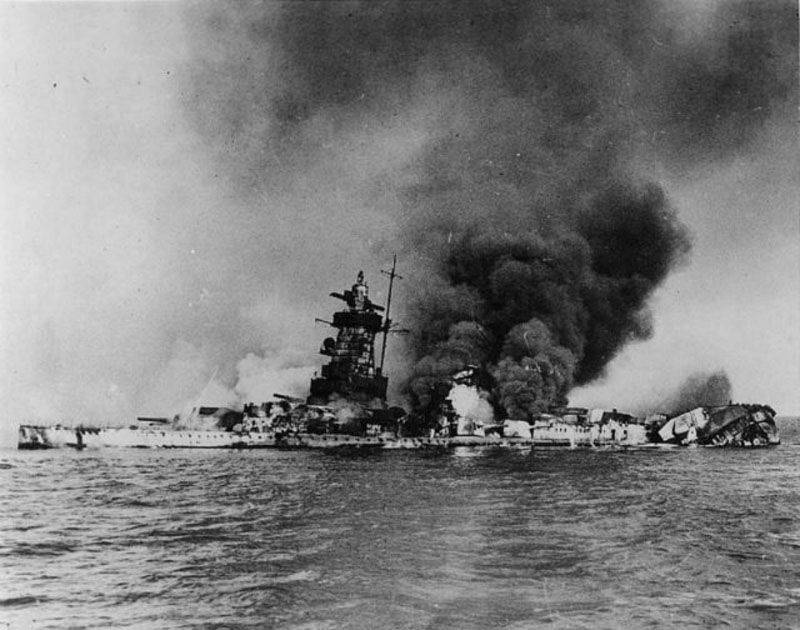
The German commander faced a difficult task: to wait for the night and try to slip away, having at least two opponents on the tail, or to go to the repair in a neutral port. Specialist in torpedo weapons, Langsdorf fears night torpedo attacks and decides to go to Montevideo. Happy December 13 "Admiral Count Spee" enters the raid of the capital of Uruguay. Ajax and Achilles guard their adversary in neutral waters. Inspection of the ship gives contradictory results: on the one hand, the battered raider did not receive any fatal damage to himself, on the other - the total amount of damage and destruction caused doubts about the possibility of crossing the Atlantic. In Montevideo, there were several dozen British ships, with the closest ongoing monitoring of the actions of the Germans. The British consulate skillfully spreads rumors that it is expected the arrival of two large ships, which clearly imply the “Arc Royal” and “Rinaun”. In fact, the "enlightened seafarers" bluffed. In the evening of December 14, Humberwood, instead of the Exeter who had gone to repair, was joined by the heavy cruiser Cumberland. Langsdorf leads difficult negotiations with Berlin on the subject of the future fate of the crew and the ship: to intern in Argentina, loyal to Germany, or to sink the ship. For some reason, the option of a breakthrough is not considered, although Spee had every chance of this. In the end, the fate of the German ship was decided directly by Hitler in a difficult conversation with Grand Admiral Raeder. On the evening of December 16, Langsdorf receives an order to sink the ship. In the morning of December 17, the Germans begin to destroy all valuable equipment on the “pocket battleship”. All documentation is burned. By evening, work on preparing for self-destruction was completed: the main part of the crew was transferred to the German ship "Tacoma". Around 18 hours on the masts of the "pocket battleship" flags were raised, he moved away from the pier and began a slow movement along the fairway to the north. This action was watched by a crowd of at least 200 thousand people. Moving away from the coast for 4 miles, the raider dropped anchor. At about 20 hours, 6 explosions thundered - the ship went to the bottom, fires began on it. The explosions were heard on the shore for another three days. The crew, with the exception of the wounded, safely reached Buenos Aires. Here Langsdorf last addressed the team with a speech, thanking her for her service. 20 December he shot himself in the room of one of the hotels. The campaign "pocket battleship" was completed.
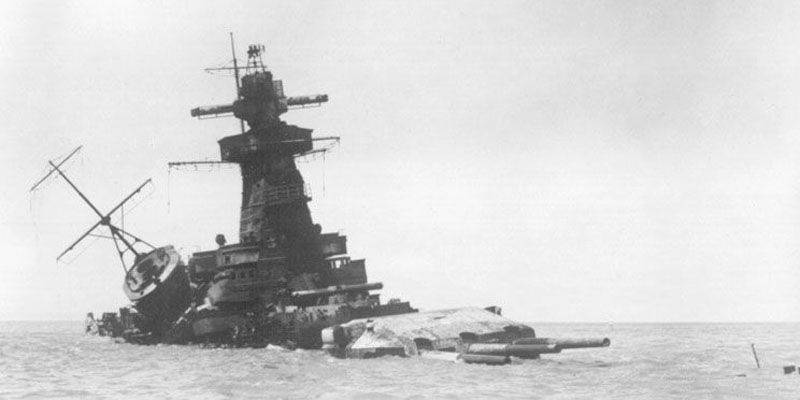
Mocking fate was pleased that the ship "Admiral Count Spee" after a quarter of a century rested at the bottom of the ocean just a thousand miles from the grave of a man, after whom he was named.
Information